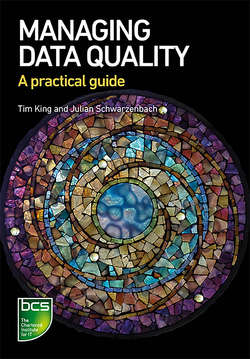Читать книгу Managing Data Quality - Tim King - Страница 31
На сайте Литреса книга снята с продажи.
Оглавление15
Managing data quality is not an easy or simple task, and there are various factors that determine the purpose and scope of data quality management in an enterprise context. This chapter explores the challenges of those factors and provides a summary checklist to help you identify those challenges that apply in your own organisation.
The complex data landscape
Within all but the smallest of organisations and enterprises, there will typically be numerous enterprise software tools, specialist decision support tools and databases or spreadsheets created by end users. There could also be a legacy of paper records and documents to consider. When cloud data stores and web-based software services that can be quickly established are part of the equation too, the data landscape is even more complex and getting more so at a rapid rate. Physical locations of data stores for an organisation are no longer solely in premises owned by that organisation.
Each of these data stores is likely to have a complex data structure to suit the requirements of the software. Developing the data models for these data stores will be a large task for an experienced data modeller. Taking a ‘step up’, enterprise architects should have an overview of the conceptual and logical data models for each of the corporate data stores. They should also understand the different areas where the same or similar data are stored.
This leads into the challenge of master data management (MDM); in other words, for all the entities that exist in more than one data store, there is awareness not only of all these entities, but also of the ‘master’ data source that is the ‘single source of truth’. Good examples of entities that are likely to appear in multiple data stores include: customers; products; employees; assets; and materials.
As data updates are required, MDM is primarily a business approach to ensure they are first applied to the master data source and then replicated to all the dependent data sources. This process can be supported by specific MDM software tools. It needs to be stressed, however, that these can be expensive to install, complex to implement and difficult to maintain, so will not be relevant to every situation. It is therefore prudent to also consider reducing (and eventually minimising) the number of different data representations of the same entity within the organisation, in order to reduce the amount of ‘work’ required for the chosen MDM approach.
2 Challenges when exploiting and managing data
